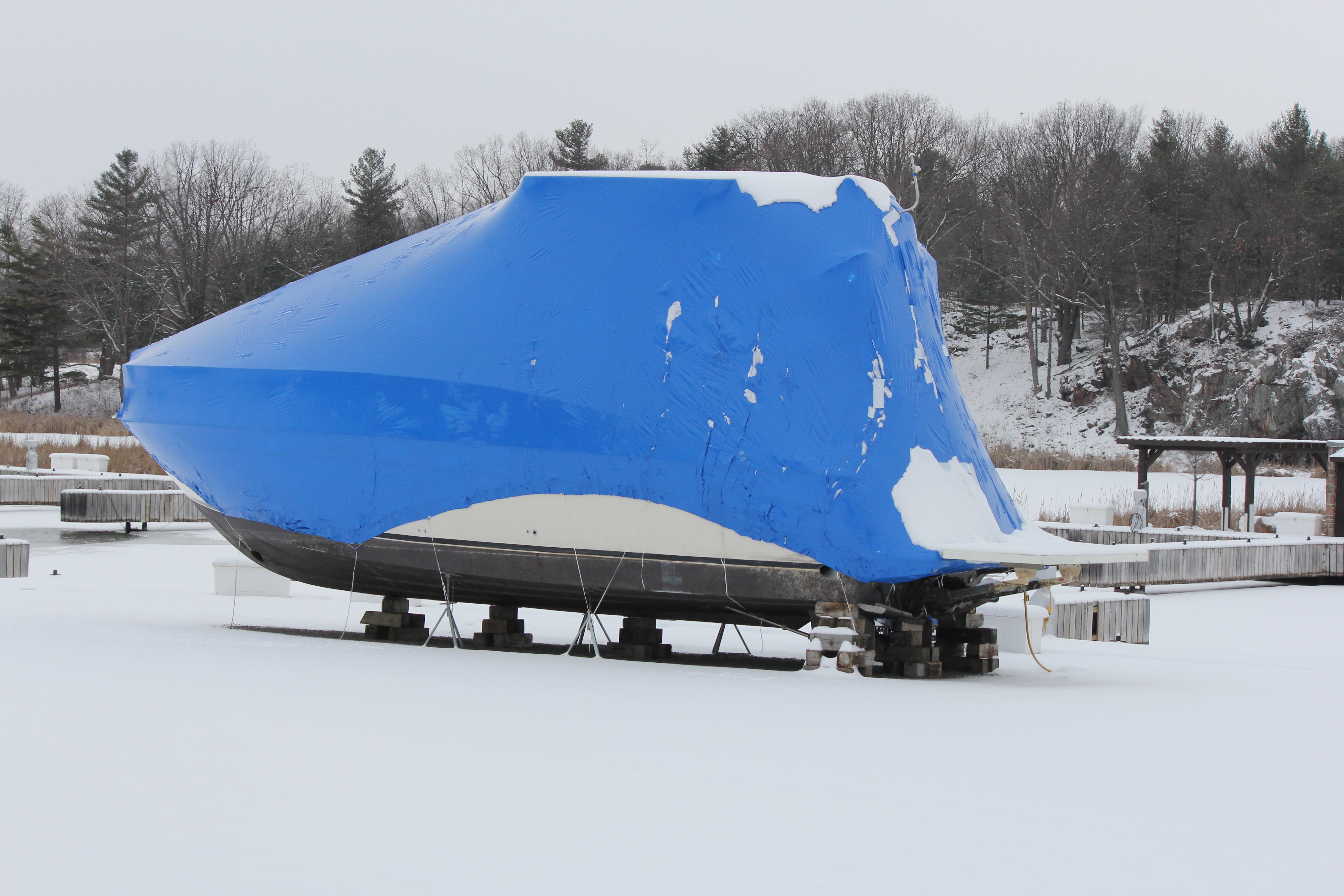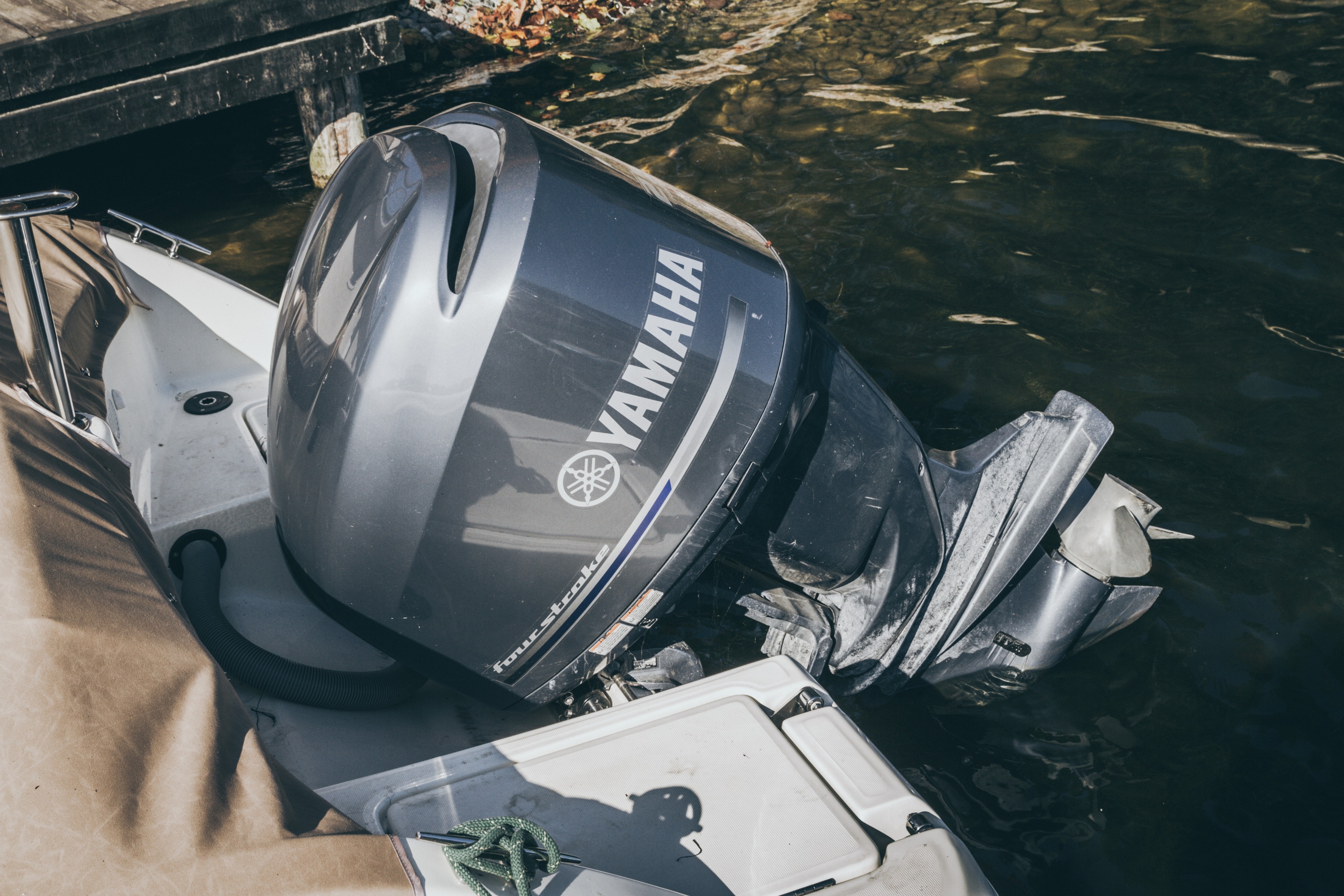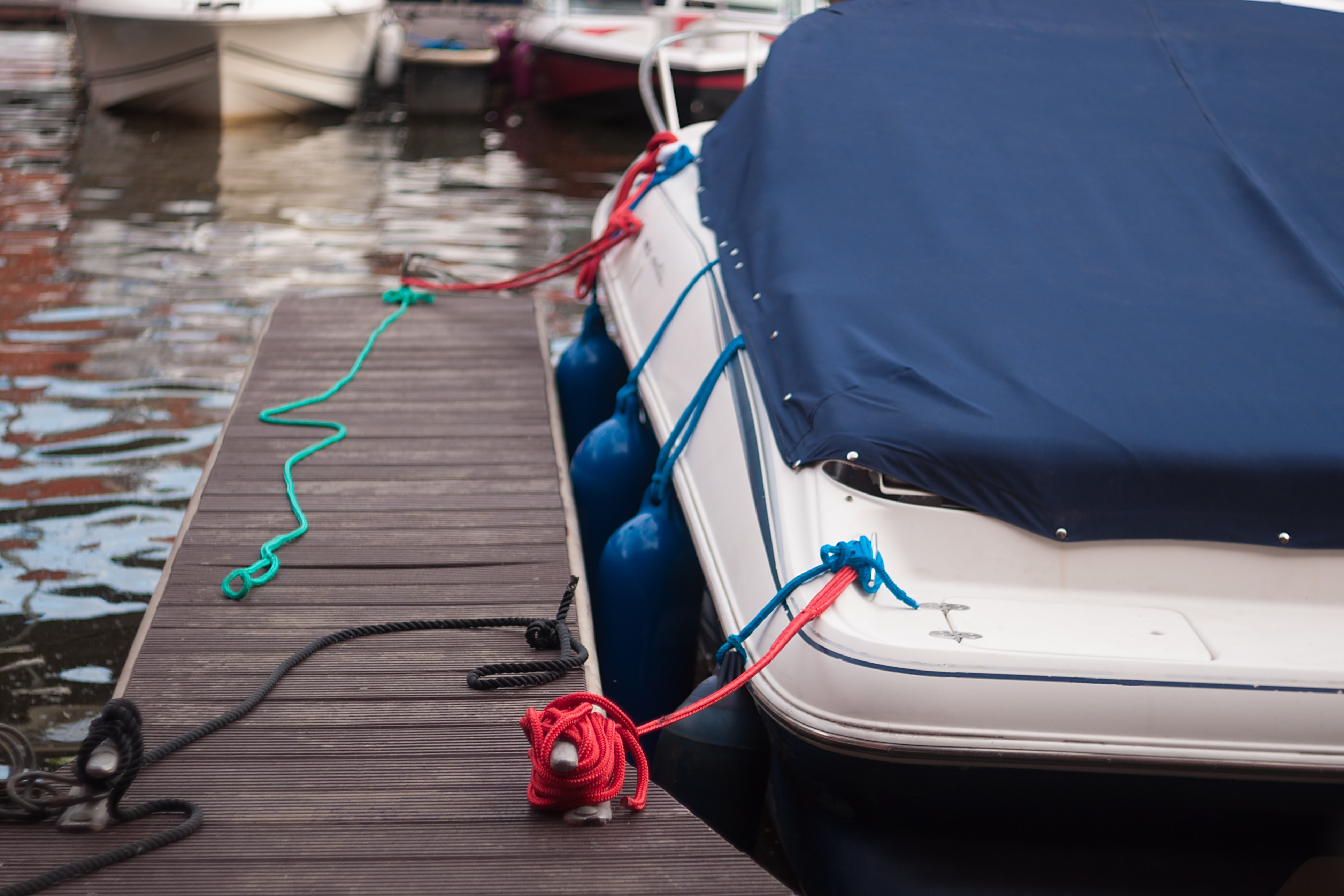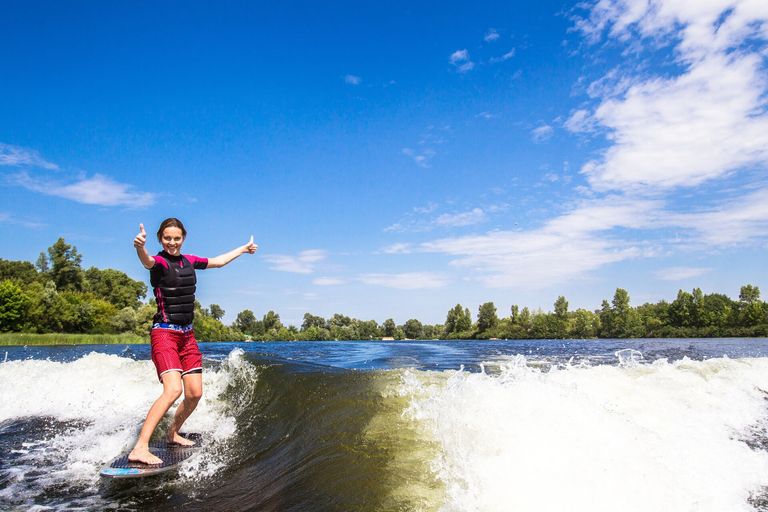How Do You Winterize a Boat? Follow Our Expert Guide

When the temperatures become too cold to be out on the water, it’s time to winterize your boat. As a responsible boat owner, annual boat winterization is a “must-do” part of ongoing boat maintenance and care.
However, many boat owners (especially in climates that don’t experience hard freezes) consider skipping this important task at the end of boating season. Yes, winterization takes some time and effort – but experienced boaters will tell you it’s worth it to ensure your boat is ready for next season.
Adding this task to your annual boat maintenance also keeps your boat safe for friends and family on the water.
Whether you live in a cold climate or don’t plan to use your boat for a while, a good winterization checklist helps keep your boat safe in storage, so there’s no delay to getting back on the water next season!
So, how do you winterize a boat? Follow our expert BOATERexam guide below!
Winterizing a Boat is an Annual Event
Do you need to winterize your boat every year? Yes!
In many areas in North America, boating doesn’t take place year-round due to cold temperatures and icy waters. So, when it’s time to put the boat away while temperatures aren’t boating-friendly, winterizing your boat becomes one of the best ways to get back on the water quickly when the weather warms.
You probably also already know that owning and operating a boat is an expensive hobby. Without caring properly for your vessel year-round, you’re more likely to deal with breakdowns and repair needs that add more costs to your boating adventures.
Sticking to an annual boat maintenance and upkeep plan helps you avoid unnecessary costs for your boat – and that includes yearly winterization! Skipping this process can leave you with a boat that isn’t in launch condition when you’re ready to hit the water for the first time next season.
Remember: without properly winterizing your boat, you could deal with cracking, bursting, and overall degradation. Boats suffering from these issues aren’t fit for the water!
Get a Head Start on Next Boating Season
Have you ever watched other boaters on the water while your boat is out for repairs resulting from cold weather issues? Avoid that scenario next season by protecting your boat with a thorough winterization process!
Those early boaters likely took the time to winterize their boats before storing them after last season. They understand that maximizing their time on the water and getting the most out of their boats starts with good maintenance year-round.
Valuable boating days go to waste if you’re dealing with a boat that isn’t safe for the water because you skipped last season’s boat winterization.
True, winterizing isn’t the most fun aspect of owning a boat. However, neglecting this task can take away from the fun you should be having on the water next season!
Put Safety First on the Water
While enjoying the water with friends and family is probably a big reason you bought a boat, safety must be a top priority.
Learning how to winterize your boat (and keeping up with it every year) helps you keep an eye on everything about your boat. You’ll also be able to spot potential problems and resolve them before they become safety hazards when it’s time to launch again next season.
While good maintenance is crucial for being a responsible boat owner, an online boater safety course helps you put safety first when on the water. Courses for boaters in the U.S. and Canada boaters help them learn more about operating a boat safely, excellent boat care (like winterization), and what to do if something goes wrong while using or transporting a boat.
We recommend following our guide to protect your boat while it’s not in use. Even if you don’t deal with hard freezes where you boat, read this guide and share it with a fellow boat owner!
DIY Boat Winterization vs. Hiring a Pro
We don’t want to talk lightly about boat winterization. It is a complicated process.
So, should you attempt to do it yourself or hire a pro? It’s not a hard task to complete, but we recommend caution as you work. Follow our guide for the best results. With your first successful winterization, you’ll be prepared to do it again every season!
However, if you'd rather leave it to a professional or just don't have the time to learn the process, paying a professional to winterize your boat is common. Find a reputable “winterization” expert you can trust to handle the process efficiently without missing any steps so your boat stays safe while not in use.
Our 10-Step Boat Winterization Guide
So, what are the steps to winterizing a boat? Follow our guide below!
Step 1. Find and Read the Boat’s Manual
Whether you’ve seen it lately (or ever), every boat has an owner’s manual from the manufacturer.
Before starting any work on your watercraft, find the manual and read the winterization tips. Most boats have specific recommendations for this maintenance task. Follow these guidelines for your boat.
If you’re not sure where the manual is, Discover Boating could help you find the documents you need.
Step 2. What to Do for an Inboard Engine
Boats with an outboard motor don’t need this step. Skip to the next step for outboard motor care!
For boats with an inboard engine, start by changing the oil and filters. Flush it with fresh water. Then, follow the boat's manual for details about circulating antifreeze through the manifold.
To protect each cylinder from corrosion, spray them with fogging oil. Then, apply WD-40 to a cloth and wipe down the engine. This helps displace moisture to clean and protect the engine.
Step 3. What to Do for an Outboard Motor
For boats with an outboard motor, start here.
Flush the engine with fresh water and make sure the water drains completely. Wash the exterior with soap and water. Be sure you rinse it well!
Next, you’ll drain the carburetor using the boat’s manual as your guide. Apply fogging oil to the pistons and cylinders and lubricate all parts. Use water-resistant grease on the threads and propeller shaft.
Finish with a light layer of wax to the engine’s exterior and change the gear oil in the lower unit.

Step 4. Inspect and Prepare the Stern Drive
This step applies to boats with either an inboard or outboard engine! Make sure you still have the boat’s manual nearby and check it for manufacturer specifics when working through this part.
Inspect the lower unit and remove plants and barnacles. Then, look at the rudder boot closely (if your boat has one) for cracks or pinholes.
Drain the oil from the gear case. Look for excessive moisture. This could indicate leaking seals that need repair before taking the boat out again.
Wash the unit’s exterior with soap and water, followed by greasing all fittings. Then, check the fluid levels in the hydraulic steering or lift pumps.
Step 5. Add Fuel to the Tank
Empty fuel tanks can collect condensation when your boat isn’t in use. So, even though you won’t be boating for a while, add fuel to the tanks during winterization.
After filling up, add a fuel stabilizer. Additionally, change the water separator and fuel filter.
Step 6. Empty the Boat’s Bilge
Water left in the bilge can freeze during cold temperatures. To avoid this, empty the boat’s bilge and clean it with soap and water.
Dry it thoroughly, then spray it with lubricant to help keep moisture out. You can also add a little antifreeze to prevent any remaining water from freezing.
Step 7. Drain and Protect Freshwater Systems
Water heaters and freshwater tanks also need to be drained.
Then, with empty tanks and systems, pump a non-toxic antifreeze through them. Turn on showers or faucets and let them run until you see the antifreeze running out.
As a last step before moving on, put non-toxic antifreeze in the water heater.
Step 8. Empty and Clean the Head
This step might require a trip to a different location to find the right place to complete the task.
So, “head” to an approved waste facility and safely empty the holding tank. Then, add fresh water to the bowl and flush several times to clean out the system for storage.
Again, reference the boat’s manual before using cleaning products that could cause damage to the head and system. After flushing and cleaning, add antifreeze to the holding tank, macerator, hoses, and y-valve based on the manufacturer’s notes in the manual.
Step 9. Process the Boat’s Interior
With the exterior components cared for, it’s time to focus on the interior. Collect life jackets or PFDs, flares, lines, fire extinguishers, electronics, and any other equipment. Inspect and clean each one, making sure they work properly.
For anything that isn’t in good working condition, remove it from the boat. Replace it before it’s time to get on the water again next season.
Check the fridge, freezer, lockers, and storage areas for additional items. Remove anything you find and clean each space.
Last, turn pillows and cushions on their sides for good air circulation. Add a humidifier or moisture and odor-absorbing product that can help prevent moisture and mildew.
Step 10. Cover It
You’ve worked hard to winterize your boat! Be sure to cover it as a final step.
Tarps are a common way to protect boats, but many boaters also use shrink wrap. If you have the budget, this can offer a higher level of protection for your boat – inside and out. Shrink wrap fits your boat perfectly, while a tarp can leave gaps that allow winter elements to get into your boat.

Bonus Tip: Store It
While you should feel quite accomplished for the level of care you’ve just given your boat, consider one last thing: how to store your boat! Boaters can store watercraft in or out of the water during the off-season.
Out-of-Water Storage
Don’t be intimidated by the idea of lifting your boat out of the water. Out-of-water storage is a popular option because it protects boats from water and sun damage. This type of “dry” storage also protects the boat’s interior.
For out-of-water storage:
- Pressure wash the hull
- Clean shafts and props
- Remove batteries
- Clean strainers and thru-hulls and strainers
- Open seacocks to drain water
If this seems like too much of a hassle for your boat and needs, there are also plenty of benefits to storing your boat in the water.
In-Water Storage
One big benefit of storing your boat in the water after winterization is you can get back on the water faster when the temperature warms up. For many boaters, this is an important consideration to maximize fun during the boating season.
When choosing in-water boat storage:
- Ensure float switches work and aren’t obstructed
- Close the seacocks
- Charge the battery fully
- Confirm bilge pumps are fully operational
- Check on your boat periodically (or confirm the marina staff does this)
If icy water is common in your area, make sure you have a bubbling system or de-icing device around the boat to avoid ice damage from freezing water.
Good Boat Winterization Launches Your Next Boating Season Better
Finding cold weather damage to your boat after the off-season is a terrible way to start the next boating season. To launch your boat well when the weather is boating-friendly again, it’s important to know when and how to winterize your boat!
You’ll have more fun (and time) on the water by following these steps at the start of the off-season. You’ll also reduce repair costs and get more long-term use with a watercraft you love.
We include boat winterization and many other safety topics in our BOATERexam online boater safety course! The off-season is the best time to sign up for your course and earn your license – so you don’t waste any time getting back out on the water.
U.S. boaters can click to find the course for their area. We also serve Canadian boaters with courses found here. Our online courses make it easy to learn crucial safety tips and earn your license at your convenience!

